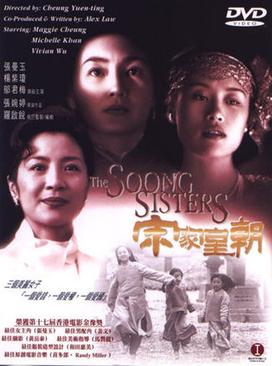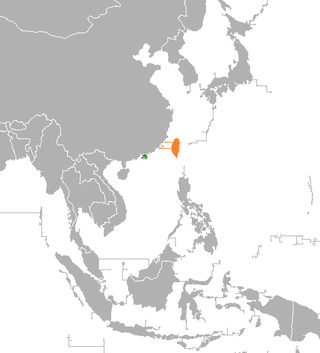| |||||
| Decades: | |||||
|---|---|---|---|---|---|
| See also: | Other events of 1943 History of China • Timeline • Years | ||||
Events in the year 1943 in China . The country had an estimated population of 444,801,000 in the mainland [1] and 6,507,000 in Taiwan. [2] [3]
| |||||
| Decades: | |||||
|---|---|---|---|---|---|
| See also: | Other events of 1943 History of China • Timeline • Years | ||||
Events in the year 1943 in China . The country had an estimated population of 444,801,000 in the mainland [1] and 6,507,000 in Taiwan. [2] [3]

Chiang Kai-shek was a Chinese politician, revolutionary, and military commander who was the leader of the Nationalist Kuomintang (KMT) party and commander-in-chief and Generalissimo of the National Revolutionary Army (NRA) from 1926, and leader of the Republic of China (ROC) in mainland China from 1928. After Chiang was defeated in the Chinese Civil War by the Chinese Communist Party (CCP) in 1949, he continued to lead the Republic of China on the island of Taiwan until his death in 1975. He was considered the legitimate head of China by the United Nations until 1971.

The Soong Sisters is a 1997 Hong Kong historical drama film based on the lives of the Soong sisters from 1911 to 1949. The three sisters married the most important historical figures – Sun Yat-sen, Chiang Kai-shek and K'ung Hsiang-hsi – in the founding of the Republic of China, making their family the focal point of every major decision made in modern Chinese history. Directed by Mabel Cheung, the film starred Maggie Cheung, Michelle Yeoh and Vivian Wu as the sisters. The screenplay was written by Mabel Cheung's husband, Alex Law, whom she frequently collaborates with.

Guan Linzheng was a Republic of China general who fought against the Chinese Communists and the Imperial Japanese Army during his career. Guan was a recipient of Order of Blue Sky and White Sun, the highest honor for a Chinese Nationalist commander.

The Sino-British Treaty for the Relinquishment of Extra-Territorial Rights in China, or the Sino-British New Equal Treaty, was a bilateral treaty concluded between the British and the Chinese government in Chongqing on 11 January 1943. The formal name of the treaty was Treaty Between His Majesty in Respect of the United Kingdom and India and His Excellency the President of the National Government of the Republic of China for the Relinquishment of Extra-Territorial Rights in China and the Regulation of Related Matters.
Events in the year 1949 in China.
Events in the year 1952 in China.
Events in the year 1938 in China.
Events in the year 1946 in the Republic of China. This year is numbered Minguo 35 according to the official Republic of China calendar.
Events in the year 1935 in China.
Events in the year 1942 in China.
Events in the year 1941 in China.
Events in the year 1940 in China.
Events from the year 1936 in China.
Events from the year 1930 in China.

Liu Yazi was a Chinese poet and political activist called the "last outstanding poet of the traditional school." He married Zheng Peiyi in 1906, and was the father of two daughters, Liu Wufei and Liu Wugou, and of a son, Liu Wu-chi, a literary scholar.
Events from the year 1945 in the Republic of China. This year is numbered Minguo 34 according to the official Republic of China calendar.
Events in the year 1944 in China.
Events in the year 1955 in China. The country had an estimated population of 605 million people.
The Treaty between the United States and China for the Relinquishment of Extraterritorial Rights in China was a bilateral treaty signed by the United States and the Republic of China on January 11, 1943. The formal name of the treaty was Treaty Between the United States of America and the Republic of China for the Relinquishment of Extraterritorial Rights in China and the Regulation of Related Matters. It became effective on May 20, 1943, following the mutual exchange of ratifications pursuant to Article VIII.

Relations between the government of Hong Kong SAR of the People's Republic of China (PRC) and the Taiwan Area of the Republic of China (ROC) encompass both when Hong Kong was under British rules or when the Republic of China controlled mainland China and afterwards the ROC fled to Taiwan. This is also a part of the Cross-strait relations.